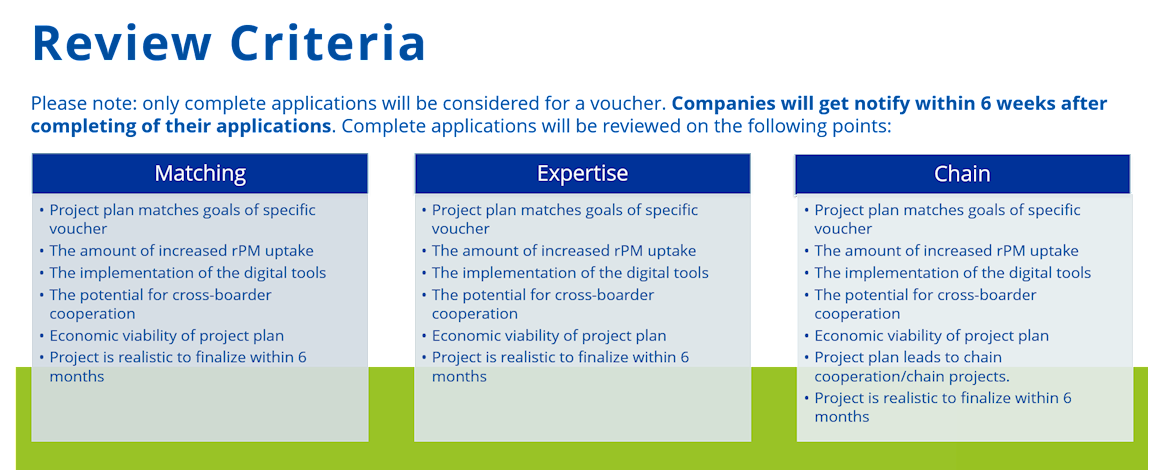Dutch article in duurzaam-ondernemen
Posted onThe article in duurzaam ondernemen emphasises the high priority for such a Kind of innovations in order to close the loop. Read More
... find suitable recyclate grades for specific products
... improve the quality control during production phase and establish a stable process with high recyclate ratio
... optimize value streams, to forward the plastic material to the costumer
All Di-Plast tools are developed as stand-alone tools that can be used independently from the other tools but also in any combination you like or need. The following example shows one possible way of using the tools.
 |
 |
 |
 |
 |
 |
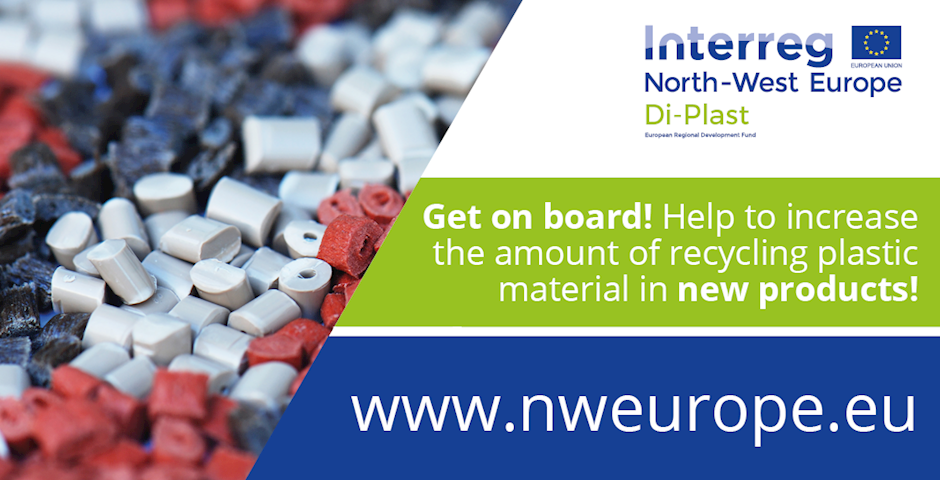
Posted on 30-07-2021
Jeff Manger and Peter Plappert form the University Luxembourg, one of our project partner responsible for the VSM tool, published a paper on "An Innovative Strategy Allowing a Holi... Read more
Posted on 04-04-2022
On the 29th of March 2022 the Di-Plast workshop "Work more sustainably with recyclate" took place at Zwolle. The workshop was organized by our project partner Polymer Science Park ... Read more
22 Friedrich-Bergius-Ring
Würzburg
97076
Germany
15 Ceintuurbaan
Zwolle
8022 AW
Netherlands
6 Rue Richard Coudenhove-Kalergi
Luxembourg
1359
Luxembourg
40 Laan van Malkenschoten
Apeldoorn
7333NP
Netherlands
45 Friedrichstr.
Stuttgart
70174
Germany
2 Warandelaan
Tilburg
5037 AB
Netherlands
29 Neuer Graben
Osnabrück
49074
Germany
19 Doeppersberg
Wuppertal
42103
Germany
Lead partner
| Organisation | Address | Website | |
|---|---|---|---|
| Wuppertal Institute for Climate Environment Energy gGmbH |
19 Doeppersberg Wuppertal 42103 Germany |
holger.berg@wupperinst.org | www.wupperinst.org |
| Name | Contact Name | Country | |
|---|---|---|---|
| SKZ-KFE gGmbH | Hermann Achenbach | h.achenbach@skz.de | Germany |
| Stichting Polymer Science Park | Femke de Loos | f.deloos@polymersciencepark.nl | Netherlands |
| University of Luxembourg | Peter Plapper | peter.plapper@uni.lu | Luxembourg |
| East Netherlands Development Agency | Martijn Kerssen | Martijn.Kerssen@oostnl.nl | Netherlands |
| Umwelttechnik BW GmbH State Agency for environmental Technology and Resource Efficiency | Jonas Umgelter | jonas.umgelter@umwelttechnik-bw.de | Germany |
| Tilburg University (JADS) | Corine Goossens | c.l.a.goossens@jads.nl | Netherlands |
| Osnabrück University | Martin Atzmüller | martin.atzmueller@uni-osnabrueck.de | Germany |
The article in duurzaam ondernemen emphasises the high priority for such a Kind of innovations in order to close the loop. Read More
The dutch kunststof-magazine reports about Di-Plast and states that such a project could be effective as a booster for the plastics industry. We just confirm this assumption. Read More
The regional paper rtvoost published an article about Di-Plast. The opportunity to recycle plastics for high quality applications is a preferable Approach from their point of view. Read More
The Dutch Journal for packaging management releases an article About Di-Plast. They point out that the smart solutions for a circular economy in the packaging sector are promising. Read More
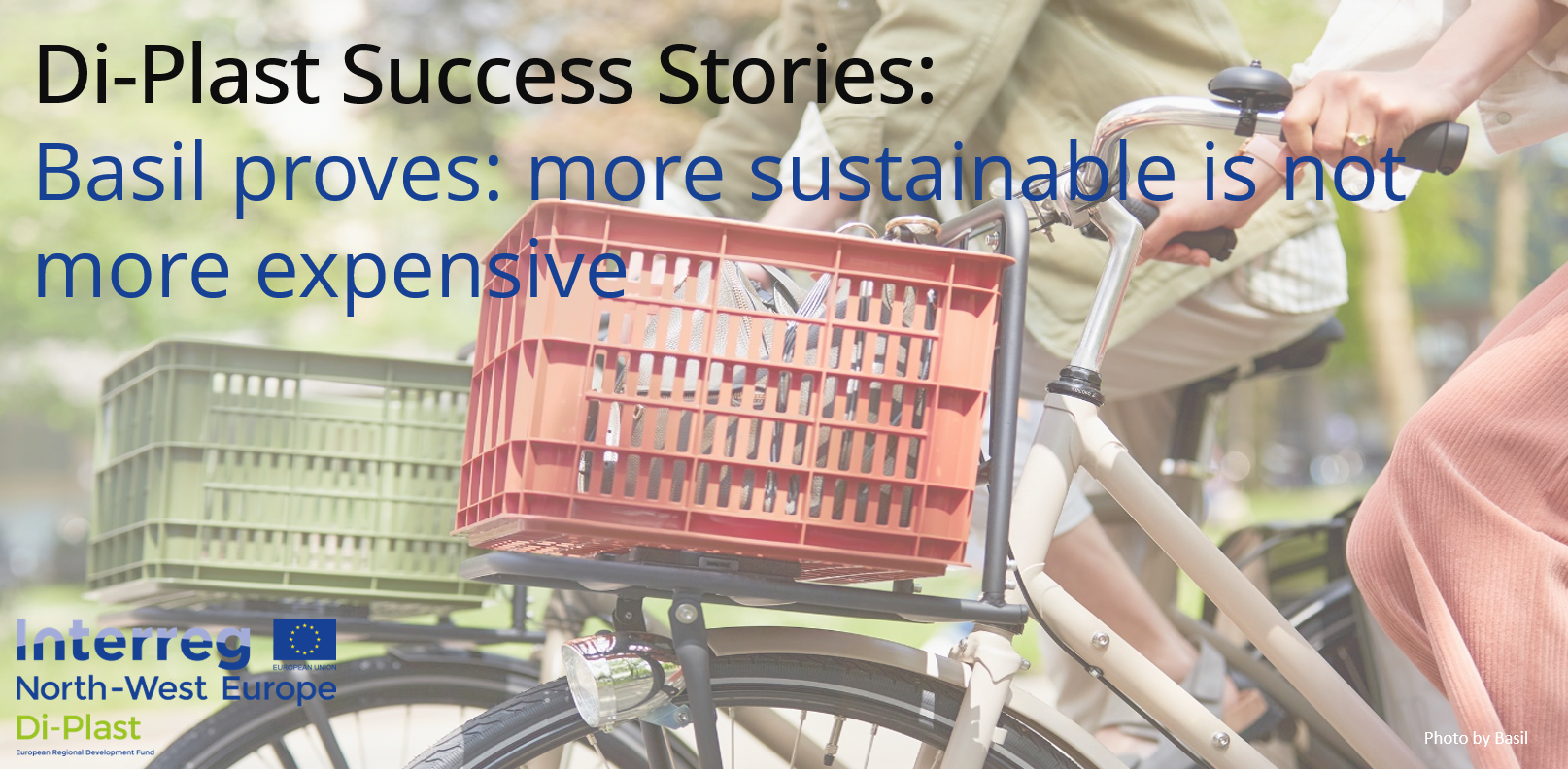
More sustainable is not more expensive. Basil, a producer of bicycle accessories, makes many products more sustainable with this credo. Their ‘masterpiece’ is the plastic bicycle crate, which is now entirely made from recycled plastic. They even lowered the retail price while keeping an acceptable profit margin. Marthijn van Balveren talks about this innovation that resulted in his company using around 75 percent less virgin plastic.
‘Re-cycling’; Basil already registered this fitting product name in 2012, ten years ago. The company from Ulft in Gelderland was working on panniers made from residual and natural materials at the time. ‘It wasn't the prettiest,’ says Van Balveren now. ‘The colors were too trendy for that time.’ Still, Basil continued, believing that their products could become more environmentally friendly. Panniers made from PET bottles, pfas-free rainwear; Basil keeps raising the bar. The company never stops discussing what products are truly sustainable. Is it a bag made of organic cotton or a plastic product that will never break? ‘The most sustainable products are durable,’ says the entrepreneur. ‘Longevity is the key to sustainability. A t-shirt made of organic cotton that can only be worn for one year is not sustainable in my eyes. Since last year, we have been giving 10-year warranties on our eco-friendly canvas panniers.’
Di-Plast
The plastic bicycle crates are durable and use environmentally friendly raw materials. ‘Our bicycle crates were produced in Asia until early 2022. It was far away, and they were working with virgin materials: new plastics made from petroleum. We used Di-Plasts’s vouchers to invest in researching an alternative’, says Van Balveren. ‘It took us a year and a half to develop a new formula and start producing it.’
‘Knowing what you know nothing about allows you to achieve a lot' is his conviction. ‘We are not experts in what plastics are suitable for bicycle crates. We work with a team of 25 people, of which only a small number focus on product development. That is why we started working with a specialist. They helped us in our search for sustainable recycled plastic. We took many things into account: which materials are prone to discoloration, what influence does UV have on the product, what forces can the crate withstand, and how does the material react to extreme cold and heat?’
Reshoring
Basil now gets their raw materials from a Dutch company. ‘This is called Reshoring: the raw material comes from our own country, and the production is automated in the Netherlands. The raw material is entirely made from household waste. Making something new from waste is possible.’
And it isn’t even more expensive than producing in Asia. ‘Which makes sense,’ says the entrepreneur soberly, ‘because how can something made from waste be more expensive than something made from virgin materials?’
The dies that were developed and purchased required ‘a bit of an investment’, with an estimated payback period of three years. ‘But such an investment is part of being an entrepreneur,’ says van Balveren. And then, jokingly: ‘We assume that the Netherlands will still be using bicycle crates in three years. We developed the crates in three sizes so they are stackable. That saves an awful lot of space during transport, which is better for the environment and cheaper. So once again: more sustainable is not more expensive.’
The raw materials for the crate are about 75 percent of Basil’s total plastic needs. And since all that plastic is now recycled, Basil needs a lot less virgin plastic. This saves around 350,000 liters of petroleum per year.
Environmental impact part of the price
Van Balveren advocates a broader vision of sustainability. ‘It is not just about where products are made or what materials are used. It is also about whether it is easy to transport, how it is transported, how durable the product is, and what can be done with it after use. I would like to see the complete environmental impact of a product included in the retail price. This phenomenon is known as ‘true pricing.’ Products that are friendlier to the environment will automatically emerge on the market; the more environmental impact, the higher the retail price. I understand that this is not easy to implement, though. The entire EU would have to implement this, to begin with.’
Price and quality
Basil does not expect customers to prefer sustainability over convenience, price, or quality. ‘The consumer just wants a good product for a good price. It is a nice bonus when this product is also sustainable’, says the entrepreneur. ‘But price and quality come first, and it must look good as well. That is why we work on sustainability in the background. It's part of our DNA; it should not ‘bother’ our customers.’
Marthijn van Balveren is happy to help other entrepreneurs by sharing Basil’s approach. Contact him via the Link below.
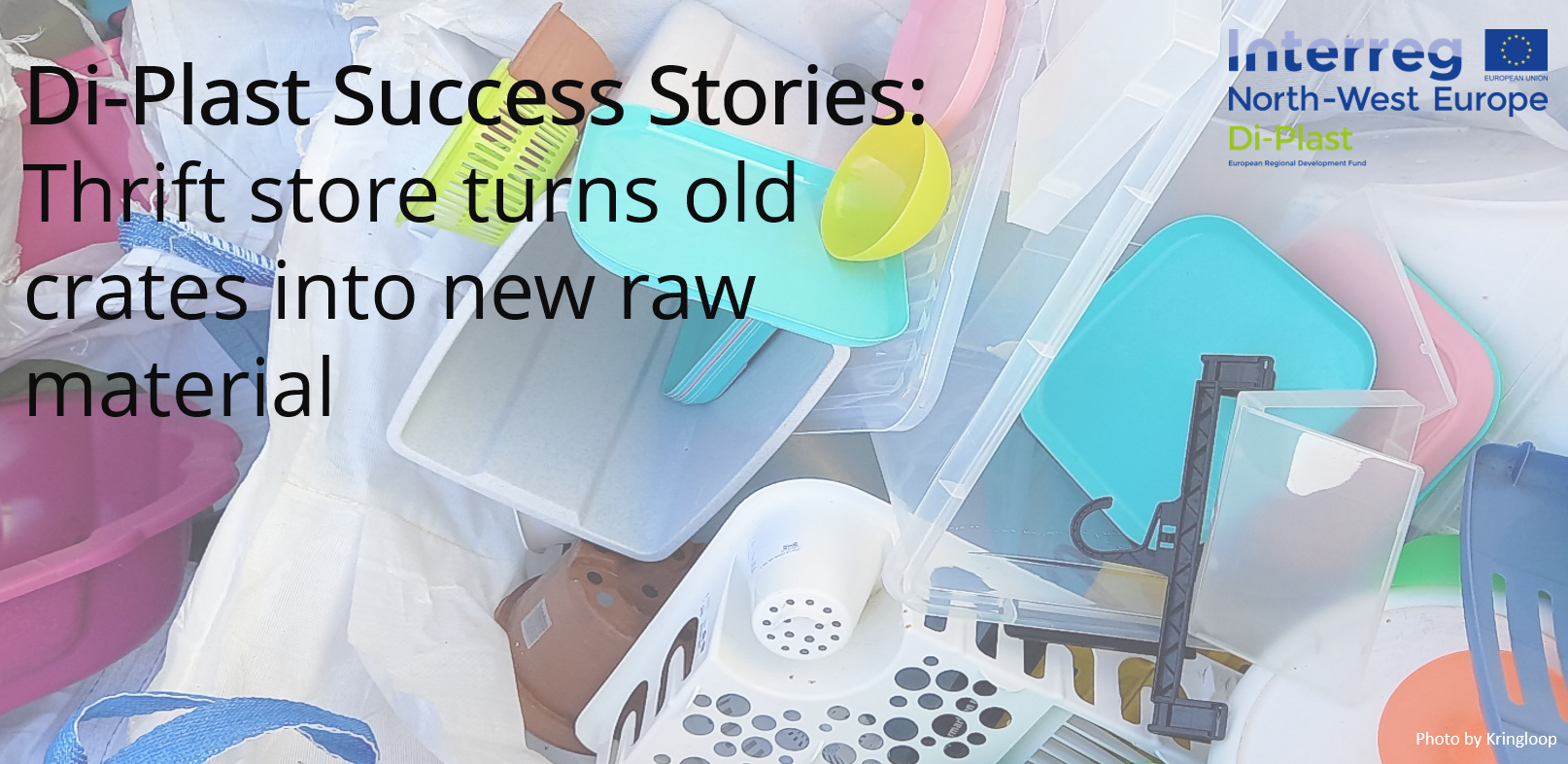
Thrift stores are the place to be for bargain hunters and those who want to give their old stuff a second life. But the supply is so plentiful that not everything can be sold. A large part is recycled, and a small part ends up in an incinerator. Wilma Voortman and Maarten van Dongeren, initiators of circular craft network WaardeRing, want to increase the percentage of stuff that can be recycled. A shredder purchased with a Di-Plast voucher has now made this possible. The shredder grinds up unsellable plastic products. The ground material then serves as raw material for new products.
“We receive mountains of plastic crates at all thrift stores, among other things”, says Wilma Voortman. She is the director of Stichting Kringloop Zwolle and Stichting Noggus&Noggus and is responsible for eight thrift stores in Zwolle, Dalfsen, Staphorst, Ommen, and Hasselt. “Such a crate costs only a few euros in stores, so people do not think about coming to a thrift store to buy one.” And so the plastic crates pile up at the thrift store. The stores must dispose of the crates and even pay a fee for doing so.
Recycling consumer plastic
A solution to this plastic surplus presented itself during consultations of the Dutch Circular Polymer Valley (DCPV), a partnership between governments, companies, and knowledge institutions in and around Zwolle. Some of the DCPV’s partners are ROVA, the Polymer Science Park, and WaardeRing. WaardeRing is a circular craft network in the region of Zwolle that seeks new, high-quality applications for items and materials that thrift stores cannot sell.
The DCPV’s partners had already considered recycling consumer plastic for some time. “At some point, we started thinking about the possibility of creating mono streams,” says Maarten van Dongen, who is also a Circular Economy project leader at Natuur & Milieu Overijssel. "In other words, a stream with only one kind of plastic from which new products can be made. One problem with recycling is that products often consist of more than one material or different types of plastics that cannot be separated in the recycling process. This makes recycling difficult or even impossible at times.”
Second life for DVD covers
Thrift store Noggus&Noggus in Dalfsen became the pilot location for creating such a mono stream, partly because of their continuous supply of plastic products. Van Dongen: “Someone from Polymer Science Park (PSP) worked with us for a few days to see what plastic products were being brought in. He trained one of our employees to recognize the different types of plastic, such as the polypropylene in Curver crates and DVD covers and the polystyrene in coat hangers, CD covers, and mailboxes. Morein Plastics in Denekamp specializes in recycling these materials and turning them into new raw materials for products such as flower pots or garden furniture." And because these are valuable raw materials for them, the thrift store gets money instead of paying a fee for disposal. And most importantly, fewer raw materials are wasted.
Professional shredder
“The project was not finished with sorting alone”, says Voortman. “Stuff takes up a lot of space. This meant we had to drive up to Morein Plastics quite a lot. Something that should be avoided when trying to do something good for the environment." The DCPV, therefore, requested a voucher from the Di-Plast project to purchase a professional shredder. “It shreds the plastic. That means we can transport bags of shreds instead of large items, which makes a huge difference in volume.”
Training employees
The new process also required logistical adjustments, says Voortman. “The thrift store in Dalfsen is part of a chain of thrift stores. We also wanted to bring the surplus of plastic products from the branches in Ommen and Staphorst to Dalfsen so that they could be shredded. We did not want to make any extra trips for this, though. So the items had to be included in the regular transport process.” The PSP-trained employee from Dalfsen trained his colleagues to ensure they knew which products could be shredded. Voortman: “He used flow charts to map out how employees should sort the products, how to recognize the different types of plastics, and how to store them. The knowledge he gained from the PSP is now secure, as other employees can now work with it as well.”
An explanation was required to convince some employees of the usefulness of the new process, says Voortman. “People like doing things the way they’ve always done them. Making changes takes time.” A comment she once heard somewhere has been very helpful: ‘plastic is the new metal’. Employees are already used to keeping metal separate. Seeing plastic as the new metal shows that it has value.”
Social benefits
The plastic from the three branches is expected to yield 12,000 kilograms of granulate annually, all of which can be used as raw material for new products. "The additional collection point at our thrift store in Zwolle-Zuid will double that amount," expects Voortman. "And that is just from intact products that are not sold. We are investigating whether it is worth collecting broken plastic items such as Curver boxes because our impact would be even greater. And it will be beneficial to the environment as well. These boxes should be taken to recycling centers, but people often throw them away with the residual waste or PMD." Other thrift stores have shown interest in the concept, says Voortman. "Four large thrift stores in Gelderland and Overijssel have already approached me!"
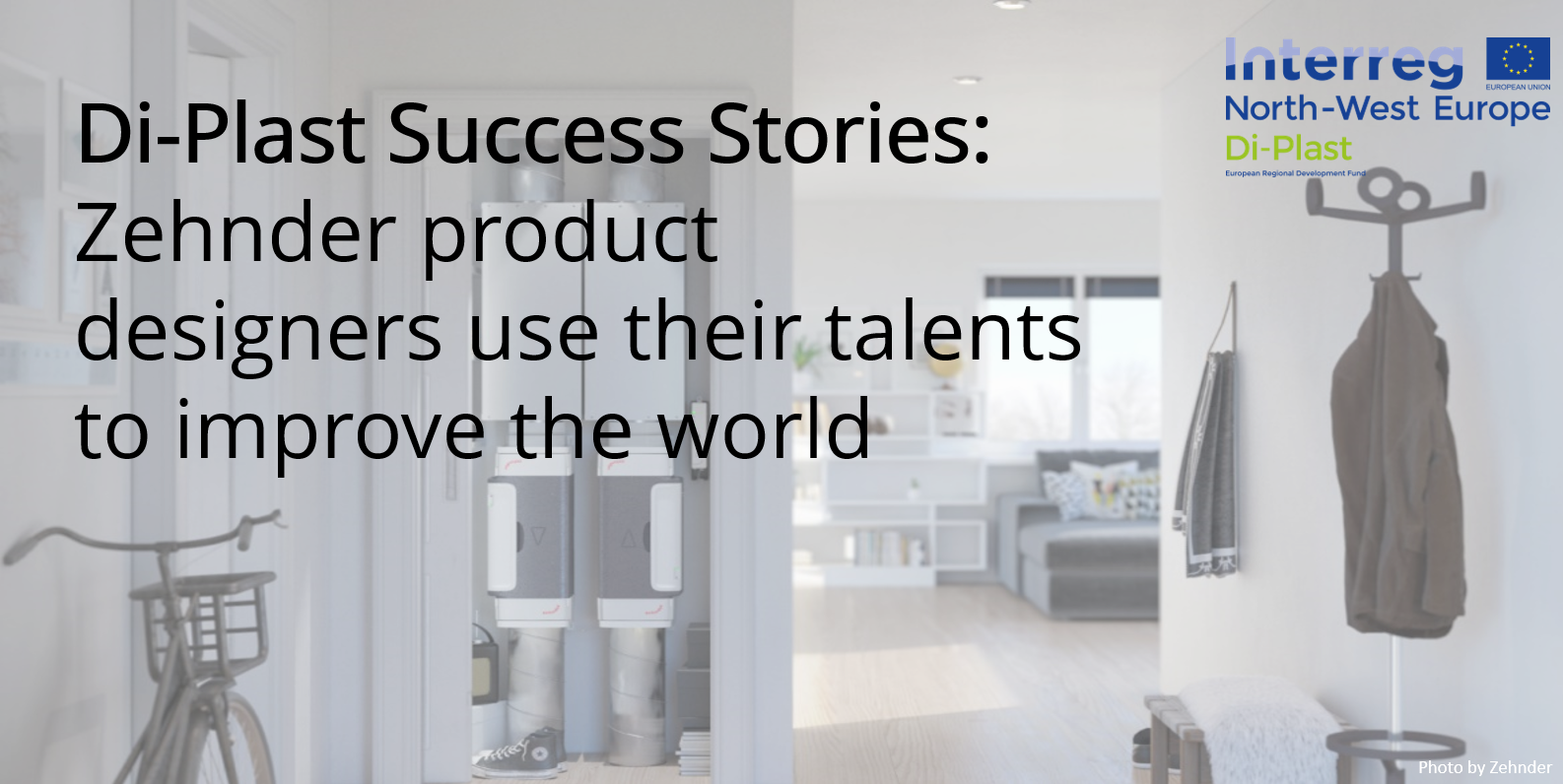
Product designers largely determine a company’s carbon footprint. The things they come up with are produced on a large scale and recycled if all goes well. Koen Korterik and Rogier Lansink are industrial product designers at Zehnder, a producer of systems for heating, cooling, ventilation, and filtration. Everything you need for a healthy indoor climate, in other words. The product designers are now looking into making a more sustainable mechanical central extraction system with the help of a Di-Plast subsidy.
“Technicians always want to learn: what is already possible, how can technology improve products, and what else is possible?” says Korterik enthusiastically. “There are a thousand ways in which something will not work and only a few in which it will. Our job is to find those ways.”
Lansink is ready to start. His challenge is to find a way to make mechanical central extraction systems, a decades-old system, from 95 percent recycled plastic. This is one of the changes that can make the device more sustainable. Others are a motor fan that lasts longer, cardboard packaging and using parts that can be transported and replaced as modules. “I will start with the housing of the extraction system. It isn’t an odd shape; we should be able to make it out of recycled plastic without much trouble. However”, he says, “it still has to work.”
This refers to the first “hurdle” that Zehnder has to overcome. “We normally add a raw material to virgin plastic to make the material solid. Talc, for example. But adding such raw materials makes it more difficult to recycle. So, you guessed it, we will not use these additives for recycled plastic, and the plastic will be more flexible”, explains Koen. “This makes it possible for air to leak through, which does not improve the product’s effectiveness. We already make the lid of the extraction system out of recyclate. We were able to guarantee dimensional stability by using ribs to give the lid the necessary sturdiness.”
120.000 kilos less virgin plastic
Zehnder received a Di-Plast subsidy at the start of 2022. This INTERREG project aims to have just under 100 companies in East Netherlands cooperate in the new plastic cycle and recycle over 100,000 tons more plastic. The expectation is that Zehnder can make a significant contribution to this. Lansink makes a short calculation: “This extraction system weighs over 2 kilograms, and we produce around 50,000 per year. That means that we have the potential to replace at least 120,000 kilos of virgin plastic – made from petroleum – with recycled plastic. That is a couple of truckloads. And, not to mention, we can use the knowledge we gain here on other Zehnder products.
Using talent for the world
The €5,000 subsidy incentivizes Zehnder to zoom in on one product and make it more sustainable, but the two product designers have a ‘drive’ to work with recycled materials either way. “The market demands it because of raw material scarcity and the need for cost savings, among other things, but we also want to contribute to the world,” says Korterik. “I used to work at a central heating manufacturer. My job was fun, but I was not too fond of the environmental impact of burning natural gas. I wanted to use my talents for something that would improve the world. We work on cleaning air at Zehnder, and we have the opportunity to make products more sustainable. We even have a ‘sustainability guild’ within the company, which focuses on minimizing negative environmental impact.”
Big results with limited effort
Minimizing environmental impact is the starting point of Rogier’s Di-Plast project. “We found that 75 percent of our portfolio can be easily made recyclable. The other 25 percent is more difficult. We will focus on the 75 percent first to achieve the greatest result with the least effort.”
Compromise
Koen and Rogier have internal support to reach their goal. “Our product marketer sees the need for a smaller ‘footprint’. He dares to compromise, which is necessary: recyclate is a bit less smooth and less bright in color, for example. He will say it is too bad because the product is now future-proof.” Koen expects that a second part of the extraction system can be made with recyclate in the course of 2023.
Injection molding plant is eager
Zehnder is using the Di-Plast subsidy to collaborate with a consultancy. “This consultancy has a lot of experience working with recycled materials. We have already learned a lot”, says Rogier. “One of these things is that we must first list the quality requirements of the product. For example, we need to consider the product’s shape and appearance. And we have also learned that we must gradually increase the percentage of recycled materials. This means that successive batches of products will have 10, then 20, then 30 percent recycled materials, and so on, until we have reached 95 percent recyclate. This allows us to properly monitor the deviations that changing the composition can cause. The goal is 95 percent instead of 100 percent because recycled plastic does not work ‘nicely’ for injection molding plants. The ‘melt flow rate index’ is less favorable. Processors need to apply more pressure to get the material to flow anyway. They also have more work cleaning the molds because leftover materials remain in them.” The injection molding plant with which Zehnder works is still eager to become more sustainable, though. “They do not mind working with less flexible materials; they also want to do well for the environment. And anyone who wants to continue making plastic products has to do so in a responsible way.”
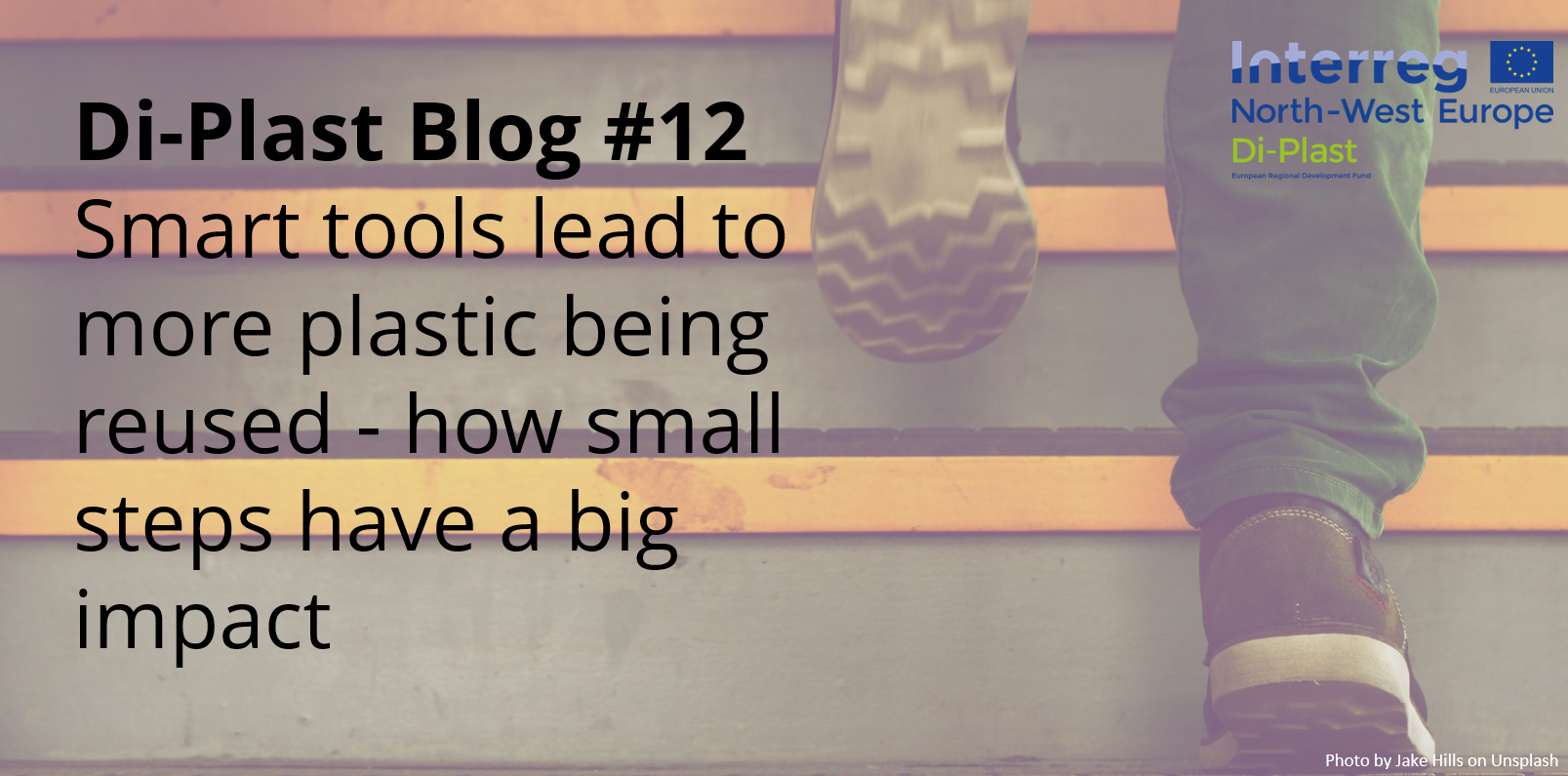
From sustainable bicycle crates to extraction systems made of recycled plastic: Di-Plast, a European project, made an excellent contribution to all these initiatives. Developments that renew and accelerate the recycling of plastic. It has been three years, and the Di-Plast project is coming to an end now. The Interreg project had the ambition to involve around 100 companies in Northwest Europe in the new plastic cycle and recycle more than 100,00 tons of plastic. The conclusion after three years is that the Di-Plast project has been successful. Several companies participated in a pilot, and various tools that facilitate the use of recyclate have been developed. In addition, 32 companies received a voucher to support the use of recyclate.
Vouchers
The transition to using recyclate is not easy for all companies. Several obstacles make entrepreneurs reluctant to integrate these processes. Examples are the specifications of recyclate, the adjustment of machines, or the wishes of the customer. Di-Plast provided vouchers for a total of €130,000 to remove these obstacles.
Companies could choose from three types of vouchers: Matching, Expertise, and Chain. Each voucher supported unique aspects of the project ideas. The vouchers helped companies work on digital tools and contributed to matchmaking. They also provided access to expertise that could be used to improve recyclate utilization or lay the foundation for collaboration between chains.
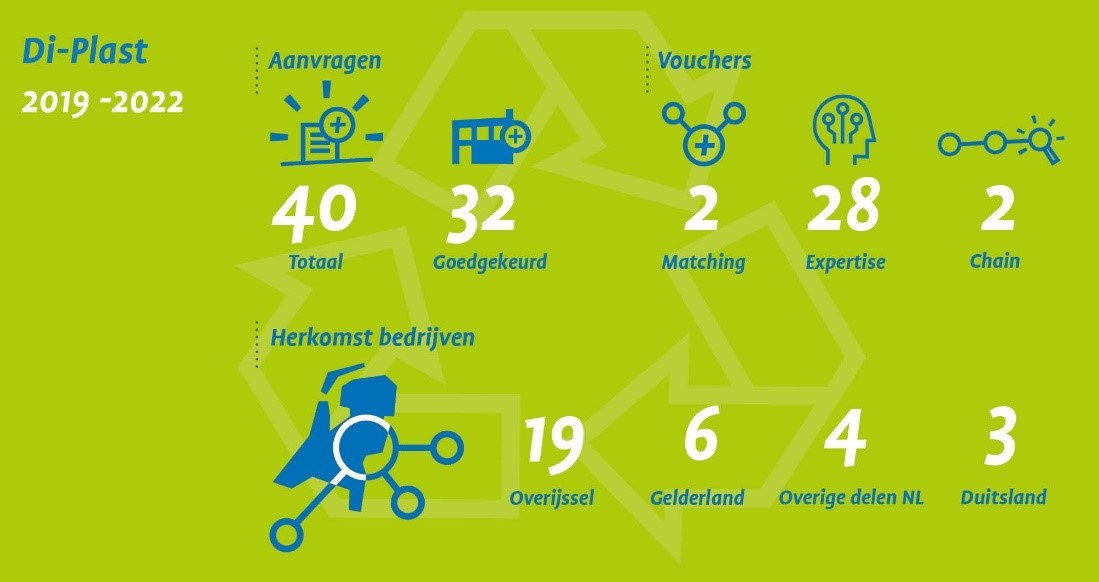
Lessons learned
Di-Plast showed that the lack of knowledge can be a bottleneck in the transition to using recyclate. The high number of applications for expertise vouchers in this project also shows this.
“We started working with a consultant with extensive recycled materials experience. We have already gained several important insights.”
Rogier Lansink, product designer Zehnder
It also appears that entrepreneurs already take their first tentative steps towards sustainability with only a relatively small amount of money. The vouchers ranged in value from a minimum of €1,000 to a maximum of €7,500. Five companies applied for a second voucher after using the first. The application process was accessible and structured. Another important effect is that the first applications resulted in additional plans, which led to more applications. The applicants were very diverse, which confirms that making the plastic industry sustainable involves all parties. Participants of the Di-Plast project were start-ups and small SMEs, but listed companies have also been part of the Di-Plast project.
How to move forward?
The Di-Plast project is coming to an end, but using recyclate remains challenging. Oost NL is involved in multiple projects focusing on circularity and sustainability in the plastic industry in various ways. For inspiration, we will share the success stories of three participants in the Di-Plast voucher project: Basil, Zehnder, and De Kringloop. This will give insight into the challenges and successes of the program.
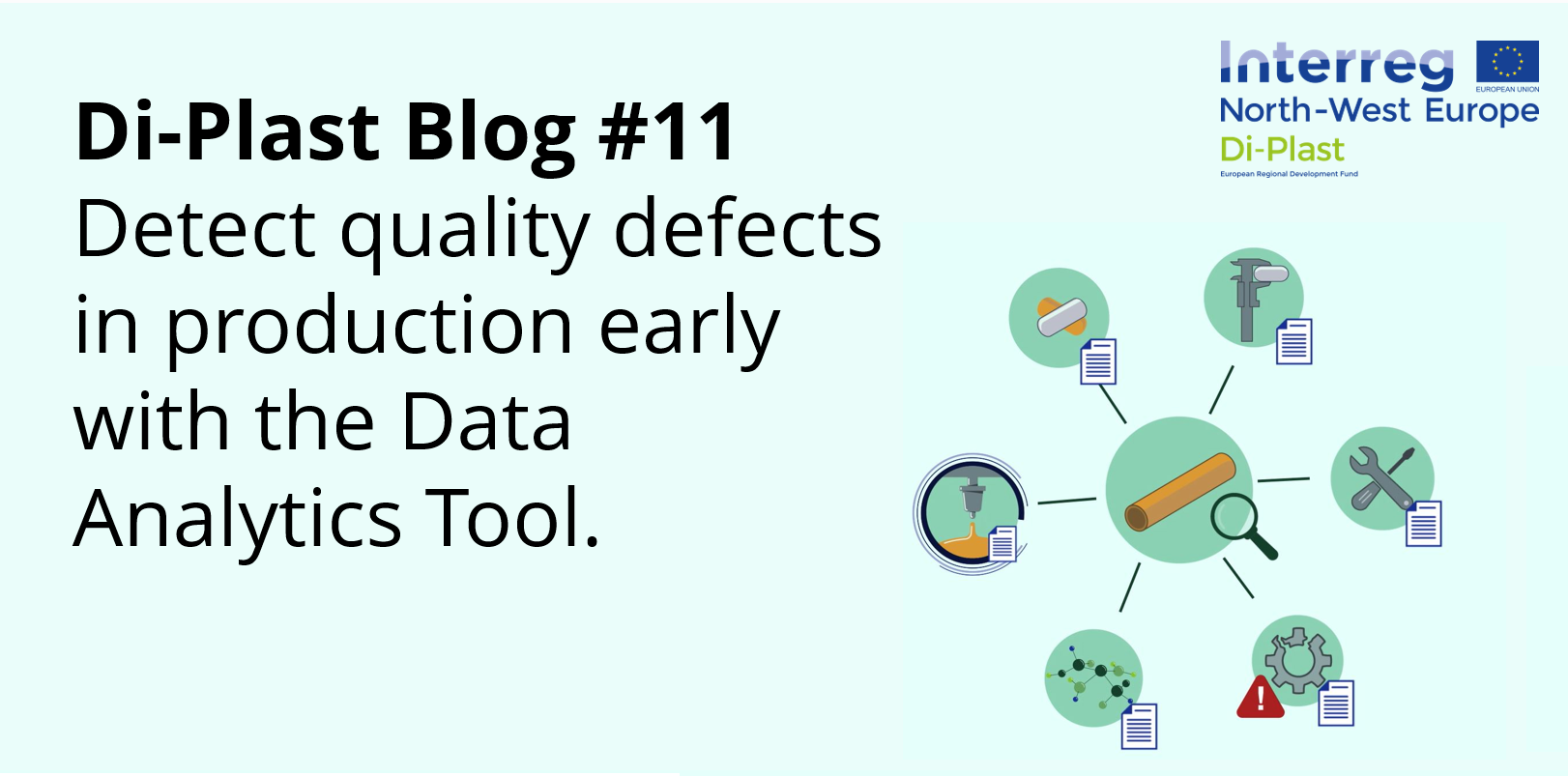
The German government’s coalition agreement includes a pledge to make the circular economy a driving force behind climate protection and the preservation of resources. It also highlights it as an opportunity to consistently advance a sustainable economy, with a whole host of measures promoting circular models and integrating fragmented policy approaches in connection with raw materials into a national circular economy strategy.
With versatile and durable plastics meeting a number of functional and aesthetic requirements, it is hard to imagine a product world without them. But there’s a catch! Producing and processing these materials can have a detrimental impact on the environment. This is why we need to consistently recycle these fantastic materials, enabling us to continue to benefit from a flexible material while minimising the negative environmental impact.
Let digital tools support you: By analysing data and optimising processes, they enable you to use more recyclate in your production process.
The EU-funded Di-Plast research initiative tackles every stage of the value chain of recyclate with a digital toolkit that aims to promote the use of recycled plastic. This toolkit includes the Data Analytics Tool that helps you to easily detect and visualise quality defects in production using data analysis.
Several real-life companies have implemented this tool, and the following example is one way to do it:
The company Pipe has adjusted its pipe production process to include recyclate. However, an internal quality check determined that while the products looked the part, their functionality did not meet required standards. The production manager team used the Data Analytics Tool to get to the bottom of the issue, analysing the production data of the relevant machines.
By visualising the results, the tool highlighted temperature anomalies with the extrusion machine. This enabled the team to conduct a targeted analysis of the results with an extrusion expert and take the necessary action.
Pipe now routinely uses the Data Analytics Tool to detect quality defects early and be able to offer products with consistent quality that benefit the environment.
So when are you going to take advantage of the Di-Plast toolkit? Boost the use of plastic recyclate in your production process and become a driving force behind the circular economy in the plastic industry.
And if you have any questions, send us an email or give us a call. We’re always happy to help!
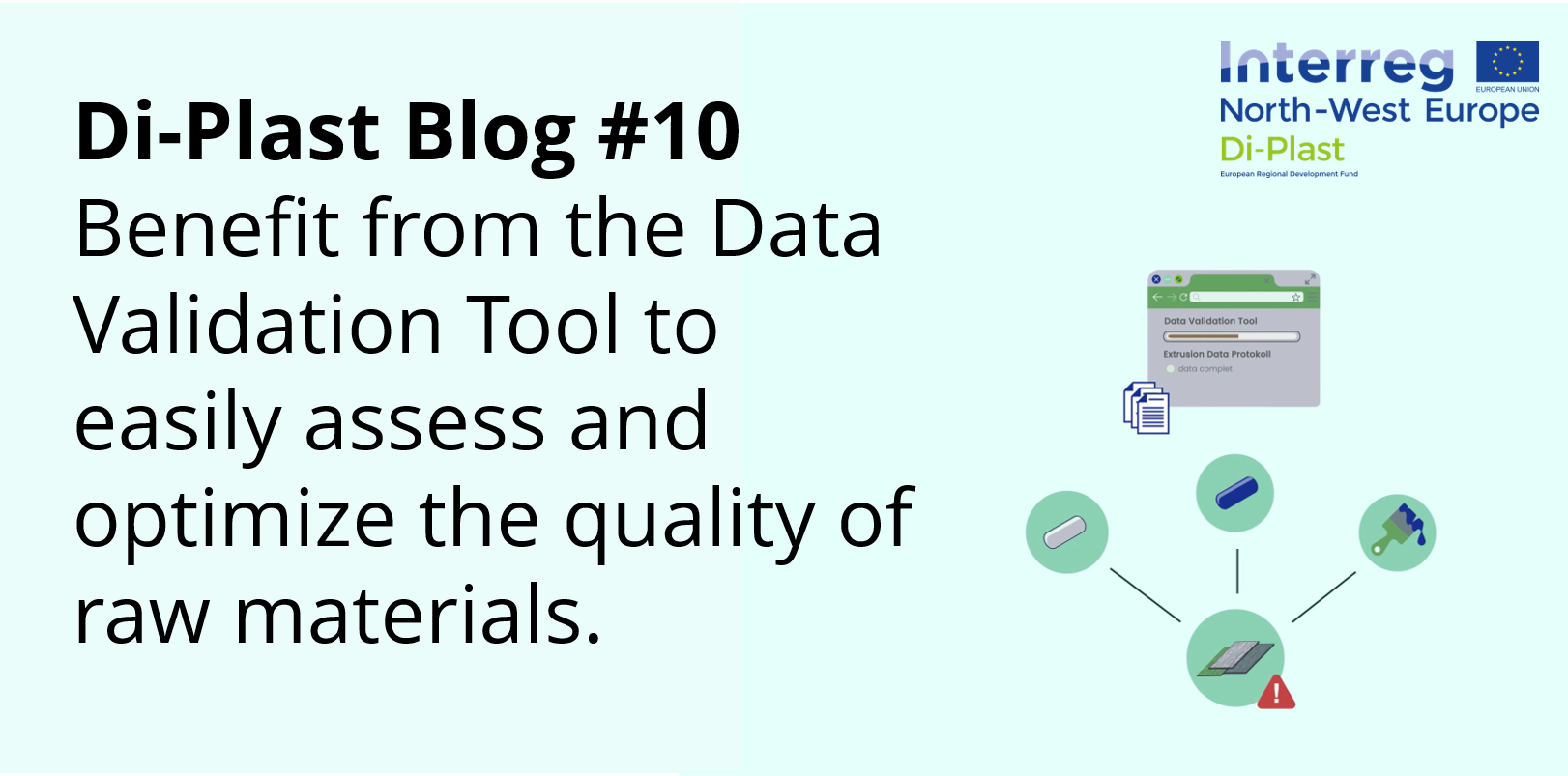
The Spain-based ALPLA Group has commissioned c7-consult – an independent life cycle assessment, climate and sustainability consultancy firm – with calculating their rHDPE carbon footprint (recycled high-density polyethylene) in order to highlight the importance of HDPE recycling.
Take the example of the Spanish Suminco recycling plants, whose rHDPE production leaves a carbon footprint of 0.24 kg CO2 equivalent per kilogramme: This amounts to 88 percent lower greenhouse gas emissions compared to the 1.92 kg CO2 equivalent per kilogramme caused by virgin HDPE. As part of the analysis, post-consumer HDPE bottles were collected and sorted (mainly in Spain) and then transported to the ALPLA recycling plants, where they were washed and processed into rHDPE granules.
What better way to showcase that investing in recycling pays off than an up to 88 percent CO2 reduction for rHDPE compared to virgin materials?
Let’s not forget that plastics are extremely versatile and almost indispensable materials. However, their effect on the environment can be detrimental. All the more important that we consistently recycle it, enabling us to continue to use this flexible material while minimising the negative environmental impact.
The EU-funded Di-Plast research initiative offers data-driven solutions for every stage of the value chain of recyclate. It aims to simplify its use by way of a digital toolkit that collects and analyses data and optimises processes.
But even the most advanced analysis tool would be in vain without accurate and complete data.
This is where a specific digital tool (included in the toolkit) comes in: The Data Validation Tool underpins data analysis and process optimisation, leading to more recyclate being used in production.
The following example reflects real-life conditions and highlights the advantages of this tool:
PVC Production manufactures different types of plastic floors, offering a comprehensive product portfolio meeting many different requirements in residential buildings, sports facilities and public buildings alike. Aiming to put their production on a more sustainable track, the company decided to replace some specific plastics used in production with recyclate.
Production specifications and data were retrieved but despite having optimised the production process to accommodate the new raw material, the quality of some of the floors was not up to par. The Data Validation Tool was able to tell PVC Production why!
It assessed existing datasets, and this analysis showed that several measurement values and sensors used in the production of base materials delivered faulty results. Having corrected missing and inaccurate values, the plastic mixing ratio could be readjusted.
Thanks to this optimised process, the company was able to incorporate recyclate into their production and reduce manufacturing costs.
Why not also take advantage of the digital Di-Plast toolkit? Optimise the quality of your raw materials and end products, reduce greenhouse gas emissions and become a driving force behind the implementation of a circular economy in the plastic industry.
And if you have any questions, send us an email or give us a call. We’re always happy to help!
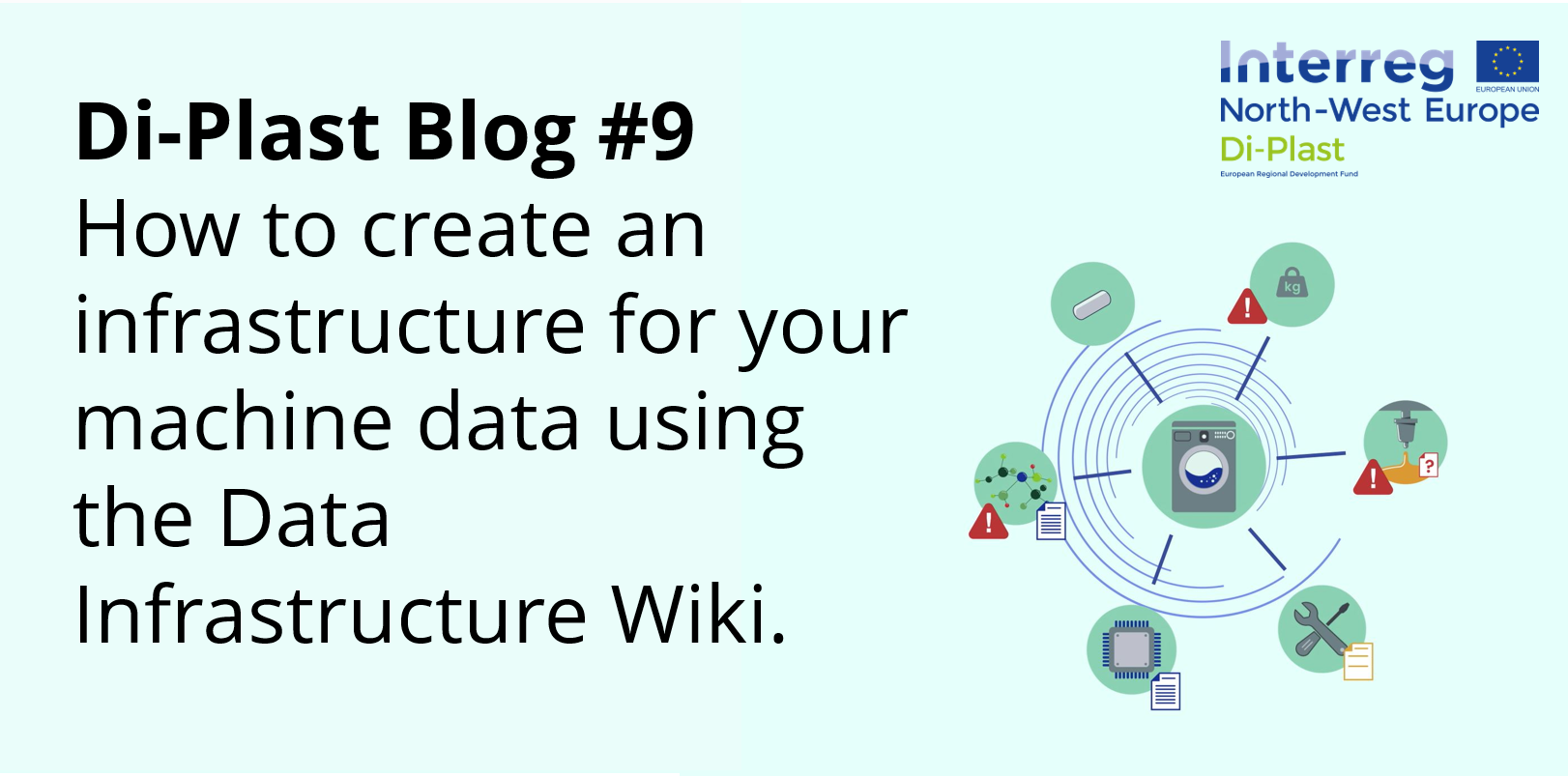
We are all familiar with the difficulties of plastic recycling. Only nine percent of plastics manufactured worldwide get recycled. The lion’s share either ends up at incineration plants, on open rubbish tips, in landfill sites, or it is simply dumped into the environment as plastic waste. Even though several solutions to these problems exist, we still have a long way to go before we can overcome the plastic waste problem.
At the same time, plastics are wonderfully versatile materials in principle. If we manage to recycle it consistently, we can continue to use this flexible material while minimising negative environmental impact.
Digital tools support this by analysing data and optimising processes. This ultimately leads to
more recyclate being used in production.
The EU-funded Di-Plast research initiative tackles every stage of the value stream of recyclate. A digital toolkit, made up of 8 tools, has been developed as part of this initiative.
To benefit from data analysis, the data must first be collected and stored. That may sound like an easy task, but building the necessary infrastructure is challenging. The Data Infrastructure Wiki is part of the Di-Plast toolkit and supports businesses in this task.
One example of how the tool is used is provided by CleanHome, a specialist manufacturer of electrical household appliances. The demands on the products are high and the production process is complex. Until now, the housings have been made from new plastics. To make their production more sustainable in future, the company decided to use more recyclates. The major challenge facing CleanHome was the varying material properties of recyclates. A comprehensive database covering all components and processes was required.
The company entered all the important parameters concerning the switch to recyclate use into the Data Infrastructure Wiki. The tool sets certain certain key factors, such as investment budget and the company’s existing resources, as fixed parameters.
Subsequently, the Data Infrastructure Wiki determines a number of specialised programmes and tools which are suited to the applicable conditions.
This allowed CleanHome to switch over to recyclates and significantly improve their internal processes at the same time.
You too can take advantage of the digital Di-Plast toolkit to tangibly further the development of plastic recycling and use more plastic recyclates in your production process. And, in doing so, you can become a driving force behind the implementation of a circular economy in the plastic industry.
And if you have any questions, send us an email or give us a call. We’re always happy to help!
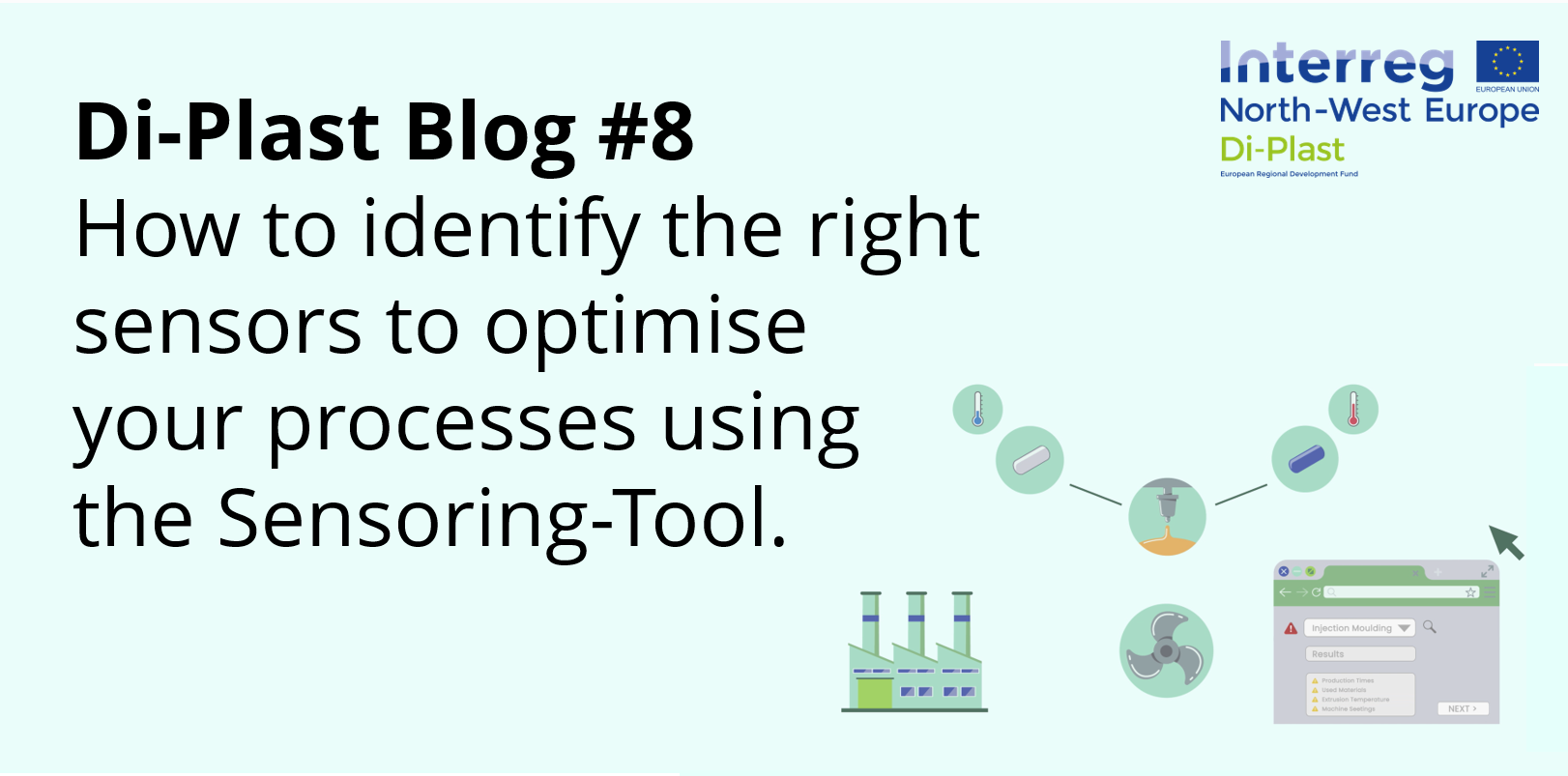
According to the latest progress report on the Ellen MacArthur Foundation’s New Plastics Economy Global Commitment, the use of virgin plastic has been successfully reduced in both trade and industry. This has been primarily achieved through the increased use of recycled plastics. A combination of measures could avoid eight million tonnes of plastic from being
produced each year by 2025.
But that is only the first step. All parties involved must keep working to increase the amount of plastic that gets recycled. This is the only way to ensure that we can continue using this flexible material while minimising its negative environmental impact.
The EU-funded Di-Plast research initiative tackles every stage of the value stream of recyclate. A digital toolkit has been developed to provide effective support for research, science, politics and industry. It contains eight digital tools to support data analysis and
process optimisation to enable more recyclate being used in production.
The Sensoring-Tool is part of the digital toolkit and can be used to select suitable sensors for process optimisation.
Here is an example of how it can be used:
When producing fans for IT systems, the raw materials used have to meet the highest standards. The products have thin walls and undergo a complex moulding process, which means they require a high level of mechanical stability. To make their production more
sustainable, the company IT Plastics wants to introduce recyclates in their production process. Despite having adapted their machines, the team at IT Plastics found that three out of every ten components did not meet the required quality standards.
The Sensoring-Tool can be used to be easily identify problem cases and find a solution. This approach revealed that temperature fluctuation occurred when processing the new recyclates, which caused quality deficiencies in the product. With the help of the tool, the team was able to select suitable sensors for monitoring and stabilising production as well as
reducing waste in future.
Find out about the Sensoring-Tool, as well as the entire Di-Plast digital toolkit, and learn how to use more plastic recyclates in your production process. And, what’s more, you can become a driving force behind the implementation of a circular economy in the plastic
industry.
And if you have any questions, send us an email or give us a call. We’re always happy to help!
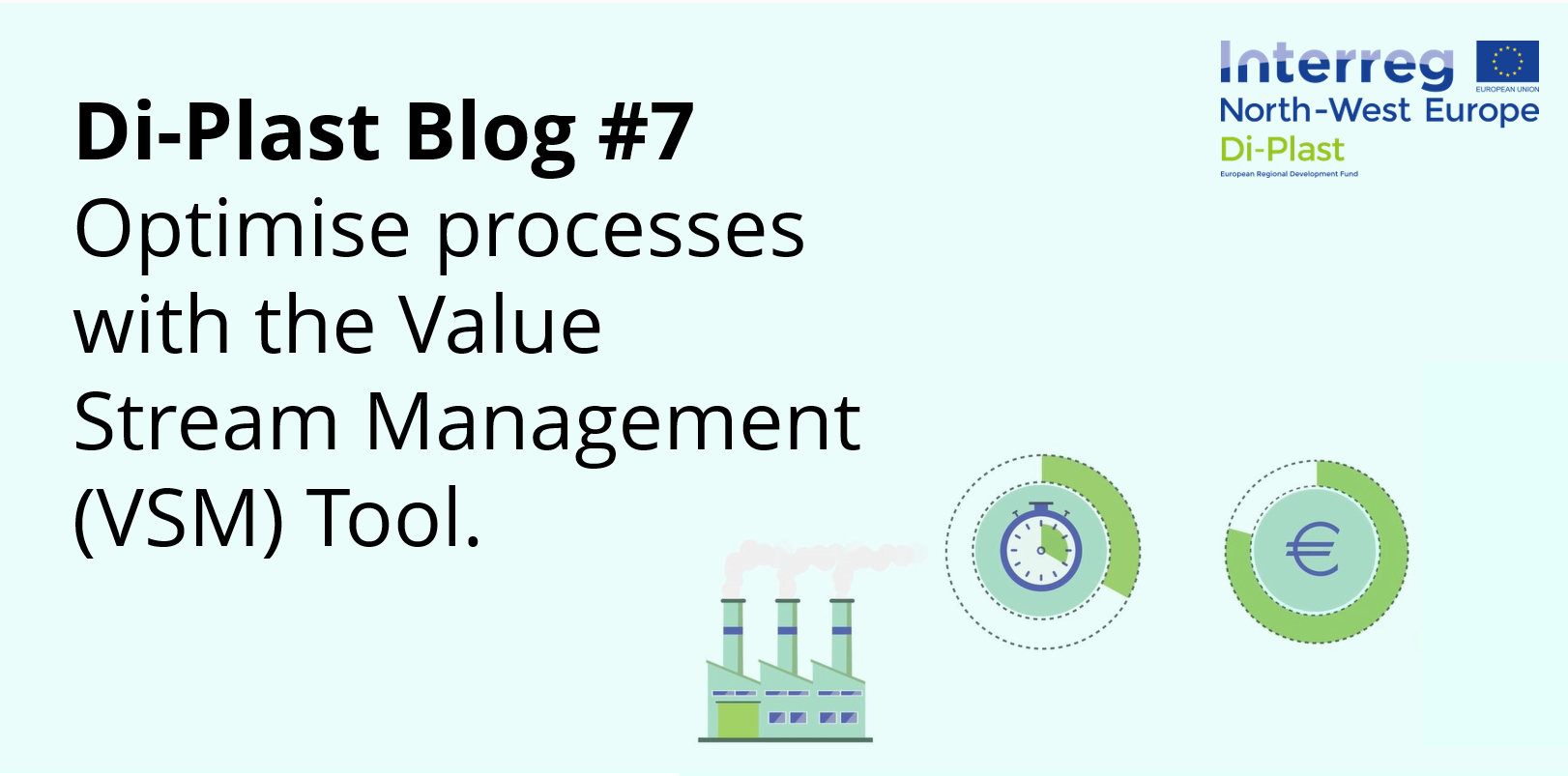
The preliminary OECD report “Policy Scenarios to 2060” predicts that, if no far-reaching measures are taken, worldwide plastic consumption is set to increase from 460 million tonnes (Mt) in 2019 to 1,231 Mt in 2060. This would represent a significantly higher increase in comparison to most other raw materials.
This leaves us with a problem, despite the fact that plastics are a wonderfully versatile material.
If we successfully manage to recycle this material in a consistent way, we can reap the benefits of having a flexible material available to use and, at the same time, minimise negative environmental impact.
The EU-funded Di-Plast research initiative tackles every stage of the value chain of recycled material. A digital toolkit, made up of eight tools, has been developed to provide effective support for research, science, politics and industry. These digital tools support data analysis and process optimisation. This ultimately leads to more recycled material being used in production.
Using the Value Stream Management (VSM) Tool, you can find out the best way to present material and information flow data which is both analysed and optimised with the circular economy in mind.
The VSM Tool is clearly explained in an easy-to-follow video, which focuses on the optimisation of individual processes. A fictitious business is used as an example:
Pipe is a company that manufactures plastic tubes which are necessary components in the shells of buildings. The plastic they use offers high standards in terms of quality and durability. To make their production more sustainable in future, recycled materials should now start to be used. This adjustment forces changes in the manufacturing process, as the new material has to be prepared for use first. Their production times still appear to take too long.
By preparing a Value Stream Management of all the individual stages of production, they were able to identify a bottleneck in the extrusion stage which was caused by the changes in the production process. The tool also recognised that potential savings could be made when materials are premixed. By optimising these two factors, Pipe not only improved their production times compared to their previous process, but they also saved money.
Get to know the VSM Tool, as well as the entire Di-Plast digital toolkit, and learn how to use more plastic recyclates in your production process. And, at the same time, you can become a driving force behind the implementation of a circular economy in the plastic industry.
And if you have any questions, send us an email or give us a call. We’re always happy to help!
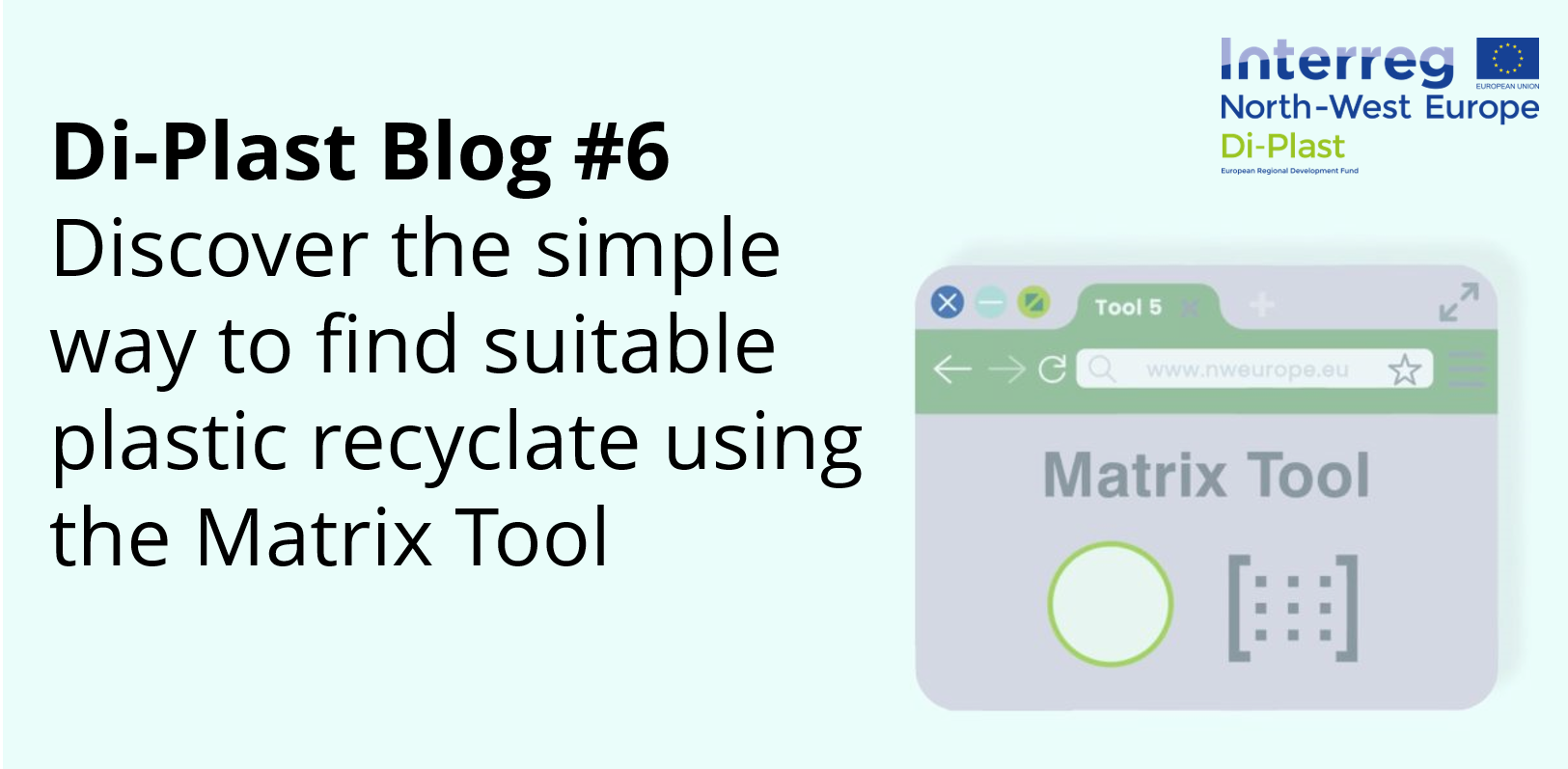
The Di-Plast research initiative funded by the EU aims to improve every link in the recycling value chain. One output of the project is the development and implementation of a digital toolkit made up of eight different tools.
The Matrix Tool helps you to match process and product requirements to the properties of recycled material, making it one of the most important tools. This will enable you to work in a more targeted way when producing, marketing or finding recyclates with a specific use in mind. The Data Extractor is another practical tool, which makes it easier to digitalise material data from data sheets to ensure compatibility with the Matrix Tool.
These tools work together to simplify the consistent recycling of plastics. The possible uses of this wonderfully versatile material are maximised, while the negative impact on the environment is minimised at the same.
Reports predict that future plastic discharge into the environment is set to double to reach 44 million tonnes per year worldwide, while the build-up of plastic in our lakes, rivers and oceans is expected to at least triple. These figures stem from a predicted rise in plastic waste, from 353 million tonnes in 2019 to 1,014 million tonnes in 2060.
The digital tools launched as part of the Di-Plast initiative analyse data and optimise processes. At long last, thanks to the Matrix Tool, more recycled materials can be used in production because the tool makes it possible to align process and product requirements with material properties.
The capabilities of the Matrix Tool are clearly explained in an easy-to-follow video, using a fictitious business as an example:
Plastics are regarded as a basic raw material in the packaging industry. Tetrabox is no exception – this company relies on plastic to manufacture food packaging.
To make their production process more sustainable, the business plans to replace some of their plastics with recycled materials. Their team faced the challenge of finding suitable material that could also meet the high food industry standards. The material also had to be flexible in terms of procurement methods and conforming to new production standards, as the food industry in particular is liable to constant changes.
This is where the Matrix Tool comes into play. The tool identified several materials that could both replace the current material and be obtained via several different suppliers. As a result, their production became more sustainability-oriented and their dependence on single suppliers was reduced.
Take advantage of the digital Di-Plast toolkit to discover how you can use more plastic recyclates in your production process. And, at the same time, you can become a driving force behind the implementation of a circular economy in the plastic industry.
And if you have any questions, send us an email or give us a call. We’re always happy to help!
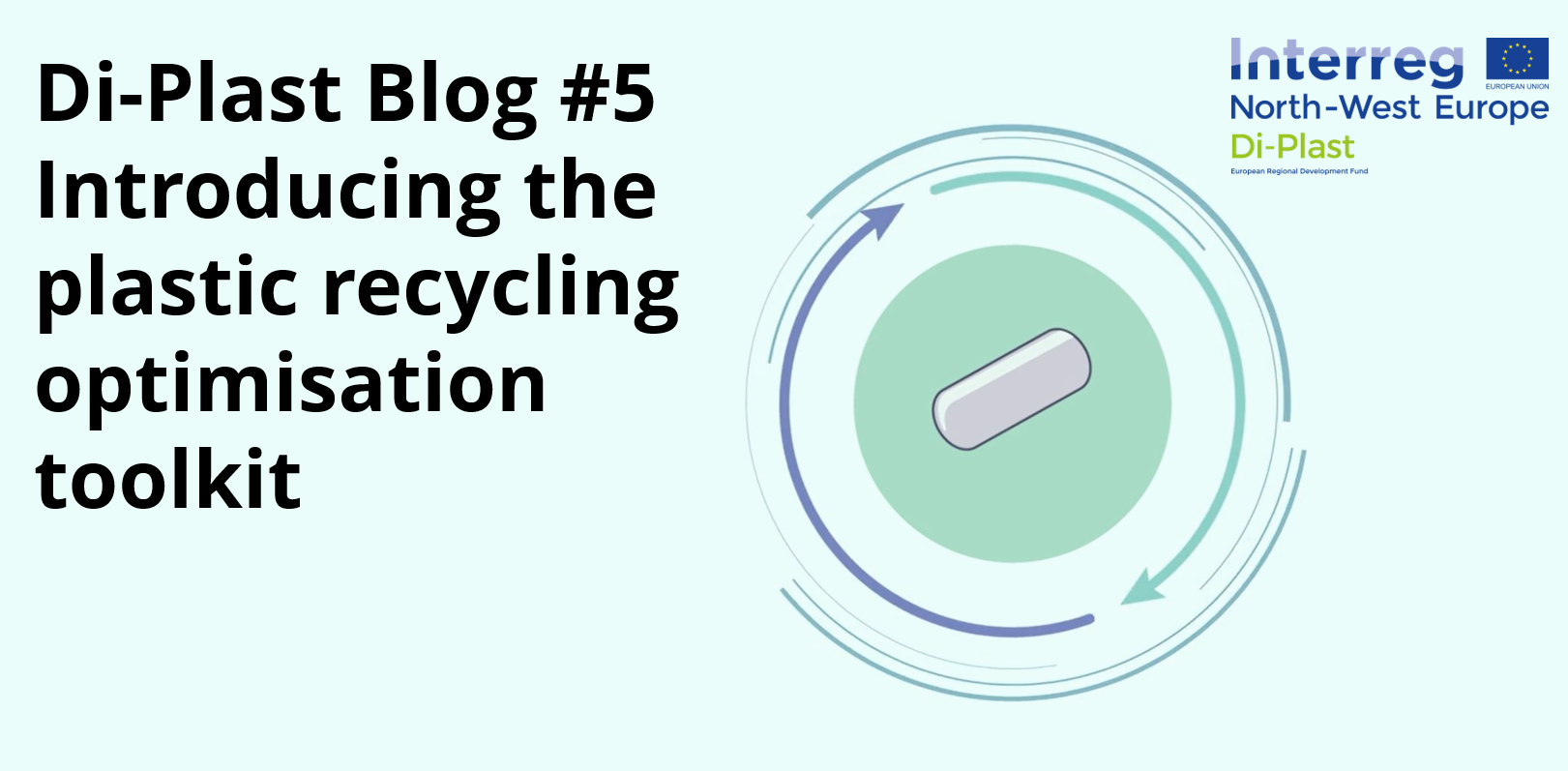
The European Union still has a long way to go before it can reach its goals for recycling plastic. The Di-Plast research initiative funded by the EU aims to improve every link in the recycling value chain. One output of the project is the development and implementation of a digital toolkit made up of six different tools.
A new project video now provides a general introduction to the initiative and these tools. All the information is presented clearly to make it easy enough for everyone to understand. As the first of seven videos, this initial overview is aimed at anyone interested in finding out more about the tools. The idea is to explain their benefits and help promote recycling within the plastic processing industry.
There’s no denying that plastics are wonderfully versatile in so many ways. But they leave us with a serious waste problem. A problem that we can minimise by recycling more plastic.
A small percentage of plastic is recycled already, but we’re far from seeing plastic recyclate being used consistently.
If we’re going to have any chance of raising consumer awareness, we have to start focusing on the quality and availability of recycled material. That’s why the Di-Plast initiative is centred around the development and introduction of a digital toolkit designed to support the use of recycled plastic.
The digital tools in the kit build on one another, raising the level of information available. And yet each of the tools also works as a standalone solution.
It may all sound a little complicated, but the video guides for each of the tools will change all that in no time.
So why not give them a watch now? (click ont he link below)
And if you have any questions at all, send us an email or give us a call. We’re always happy to help!
For all the videos, descriptions, detailed guidelines and more, head over to the Di-Plast Knowledge Hub (link will be added shortly).
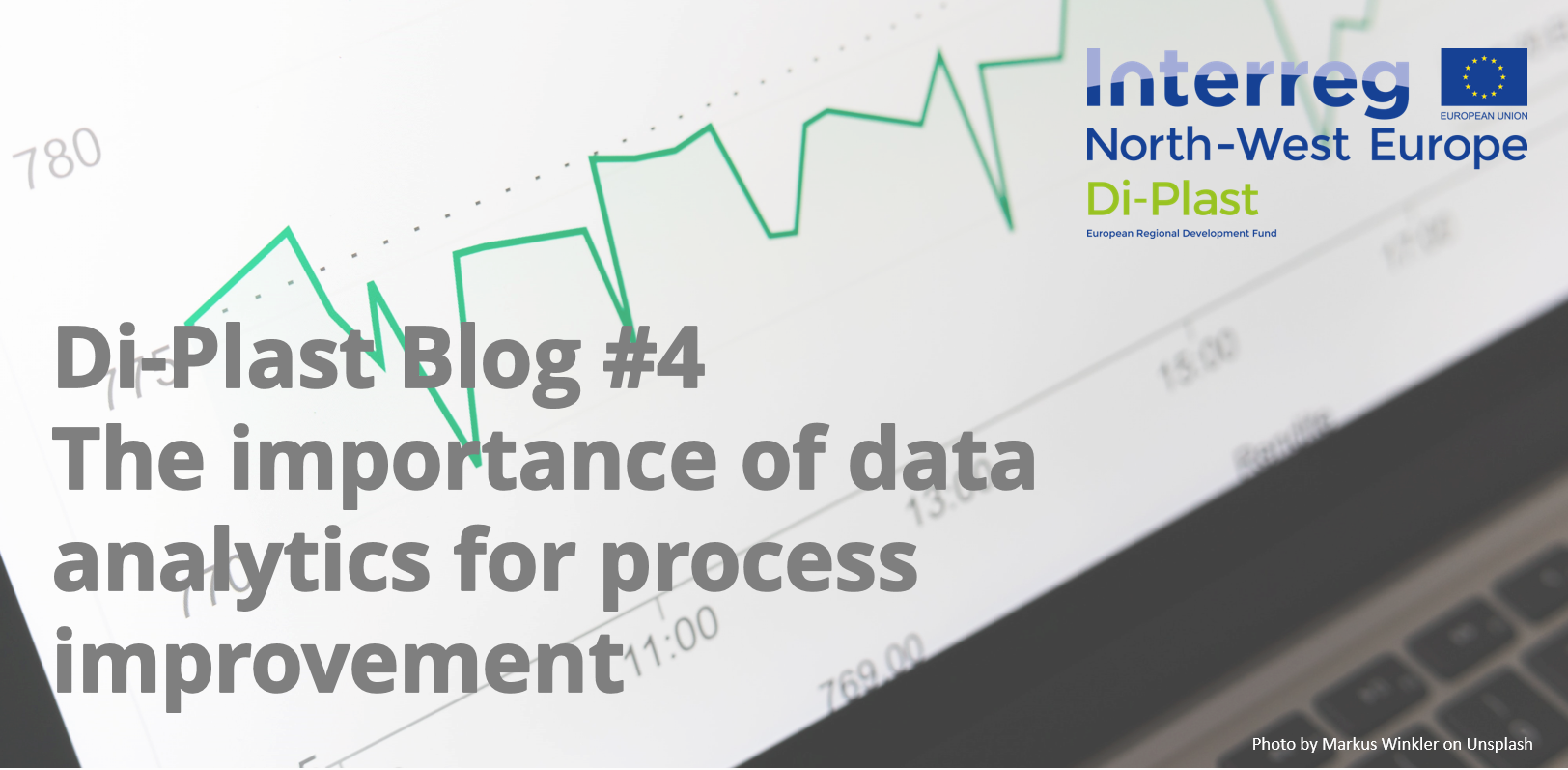
Sustainability and recycling have become more and more relevant within society. The public opinion is shifting more towards a world where recycled plastics becomes the norm to reduce the amount of plastic waste in our oceans and its impact on the environment. However, recycling plastic is not as easy as it sounds, and therefore much of our plastic waste is not usable for recycling. One of the main issues with recycled plastic material is the quality of the material. There are many different characteristics that influence this quality, for instance, the colour of the plastic waste or the amount of dirt within the plastic waste. If we want to increase the amount of recycled plastic, we should focus more on improving the overall quality of the material.
With this improvement, organisations are able to use the recycled material in more delicate applications such as packaging of food (this is currently really difficult to achieve due to many quality regulations). One possible solution for quality improvement can be achieved using advanced data analytics, which is something that the Di-Plast projects aims to do. This works in the following way:
If you are interested in learning more on data analytics to improve your processes or want to be part of the Di-Plast project to co-develop or use oiur tools, just contact our experts below.
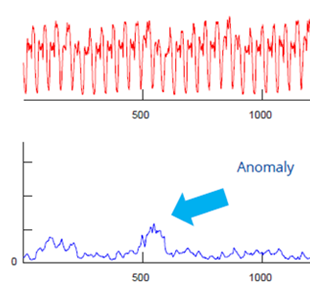
Anomalies in process data (red line) made visible via data analytics (blue line)
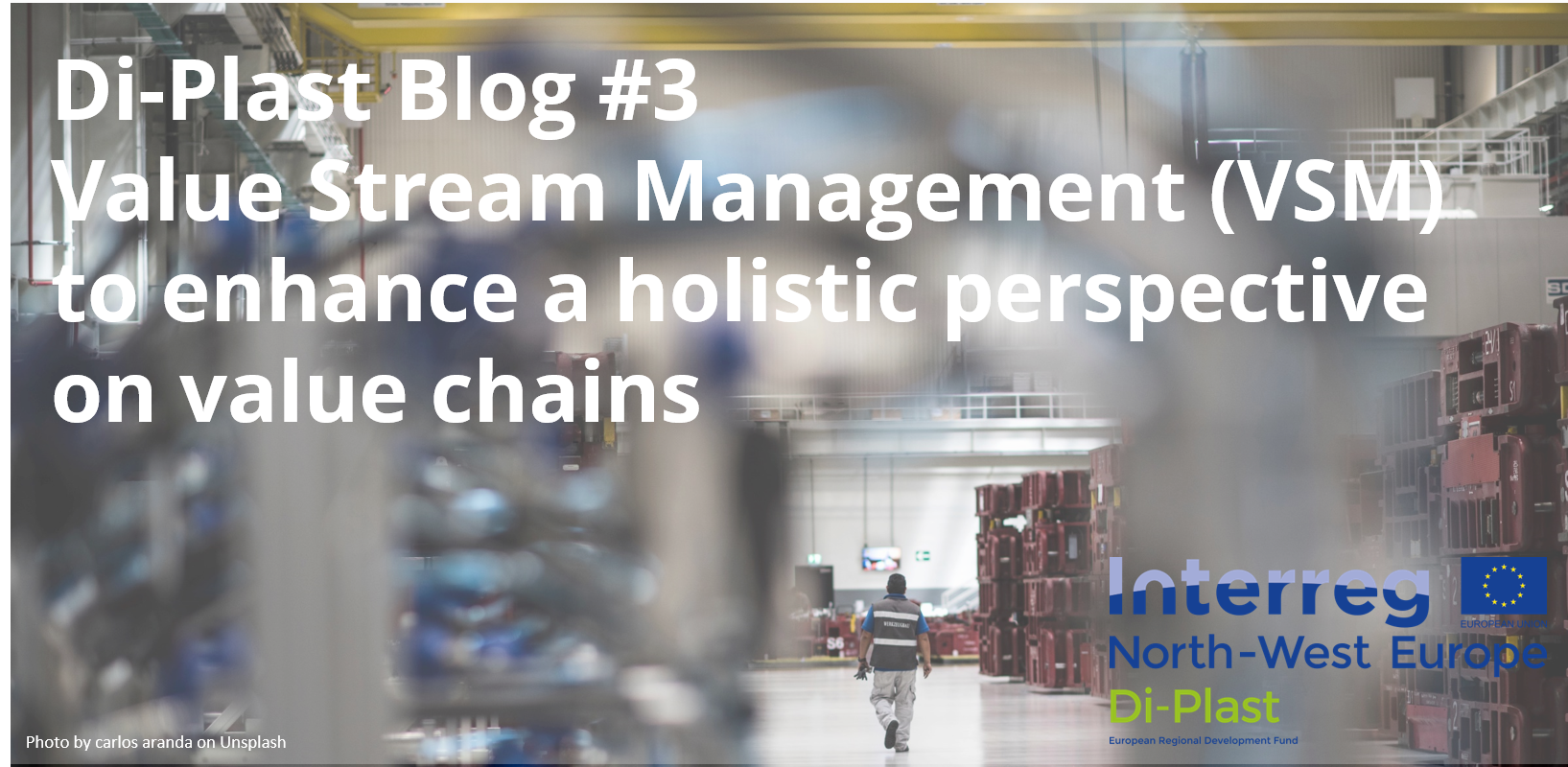
The concept of circular economy (CE) is currently receiving encouraging attention among scholars and industrials, as a convenient solution to move away from the linear economy concept, without neglecting the goals of sustainable development. As main goals, the closing of resource loops and the keeping of resources in the system for as long as possible at the highest utility level, are mentioned as main goals of CE. Nevertheless, most companies still adopt a linear approach or just focus on providing information to the end-user to maximize their satisfaction during the use phase, while only a small amount have approached CE in a holistic way.
This gap between aiming to implement CE principles and apply them in a holistic manner is a widespread inconsistency. The VSM-tool, which is provided within the Di-Plast project, intervenes at this exact point, and can help YOU to get a clearer and more holistic view about your internal processes (micro-level) and if possible, about your supply-chain interdependencies (macro-level).
VSM is an effective, easy to use tool to collect, evaluate, and continuously improve product and information flows within companies or interrelated supply-chains in a common and standardized manner (ISO 22468:2020). While being one of the more common lean methods, its aim is to deliver value from your customer’s perspective and continuously improve your processes. This is done according to the statement: ‘Learning to see’.
Within the Di-Plast project, the VSM method was adapted with new indicators (e.g., energy- & water consumption, scrap rate, different material flows, etc.) and visualizations, enabling a circular perspective on resource flows within companies and throughout supply-chains.
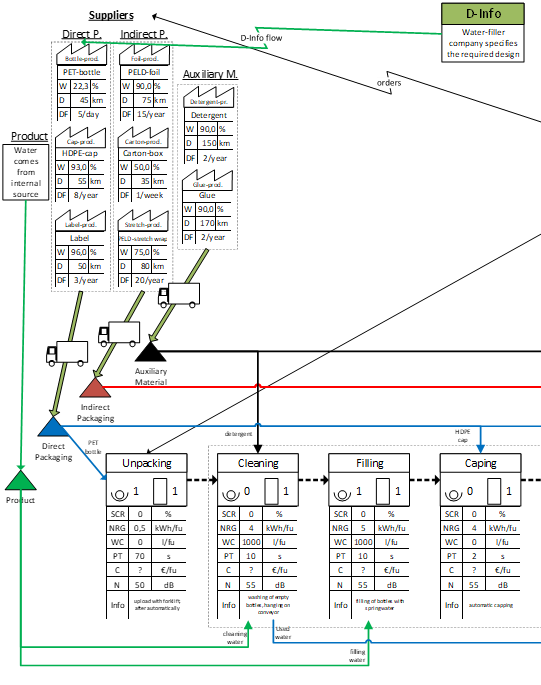
Figure 1 Example of a CE adapted value stream map
at micro-level
Currently, the method is tested and further developed within several companies in the Di-Plast pilot phase. If you are interested in joining the pilot-phase and apply the tool together with our experts within your company or within your supply-chain to increase the overreaching cooperability, feel free to contact us. Otherwise, you still have the chance to apply the finished tool during the Di-Plast uptake acceleration program.
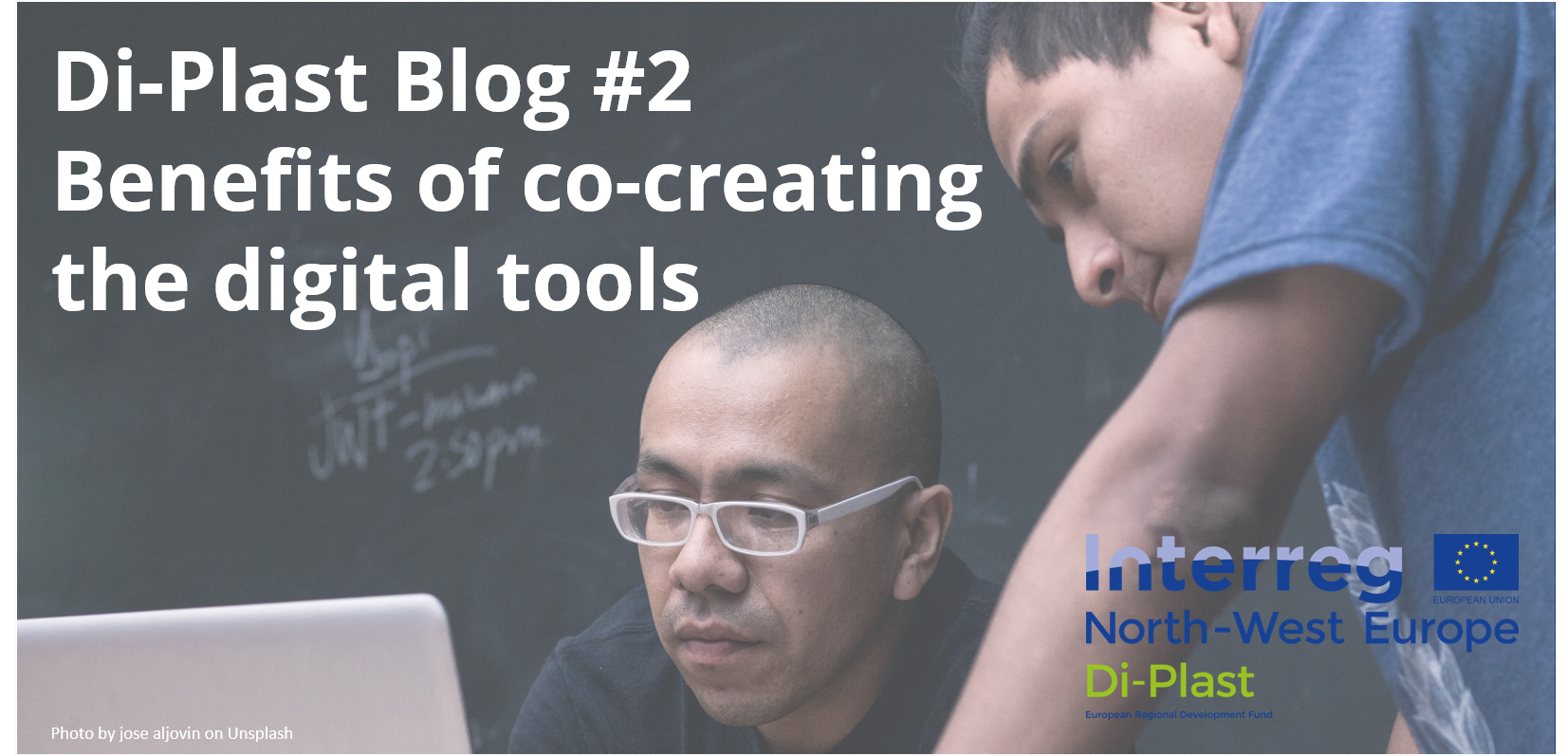
Selected companies are given the opportunity to participate in the development of the Di-Plast Toolkit. The aim is to increase the proportion of recycled material in their products and to improve the quality of the process and product using digital tools. By joining these pilots, companies can directly influence the development of the tools in the co-creation process. This ensures that the functions are tailored to their needs. In addition, the pilots offer many other advantages for the companies:
If you would like to learn more about the pilots, please follow the links below.
If you are interested in beeing part of the pilots, please contact Heicke Gaedeke via e-mail.
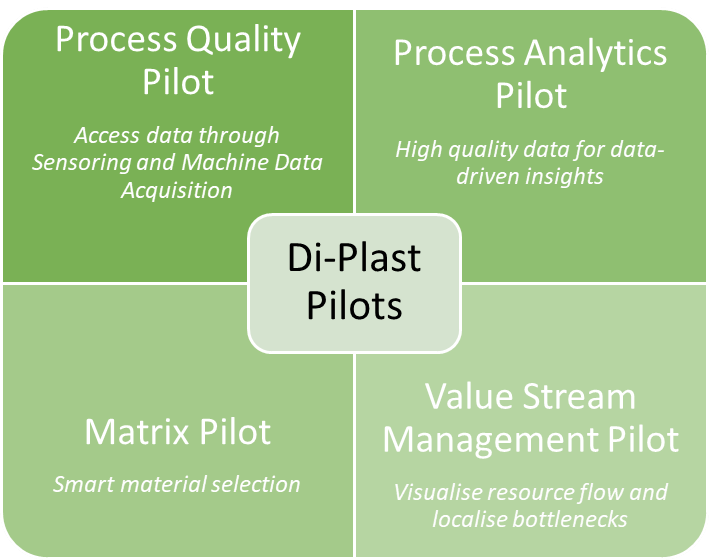
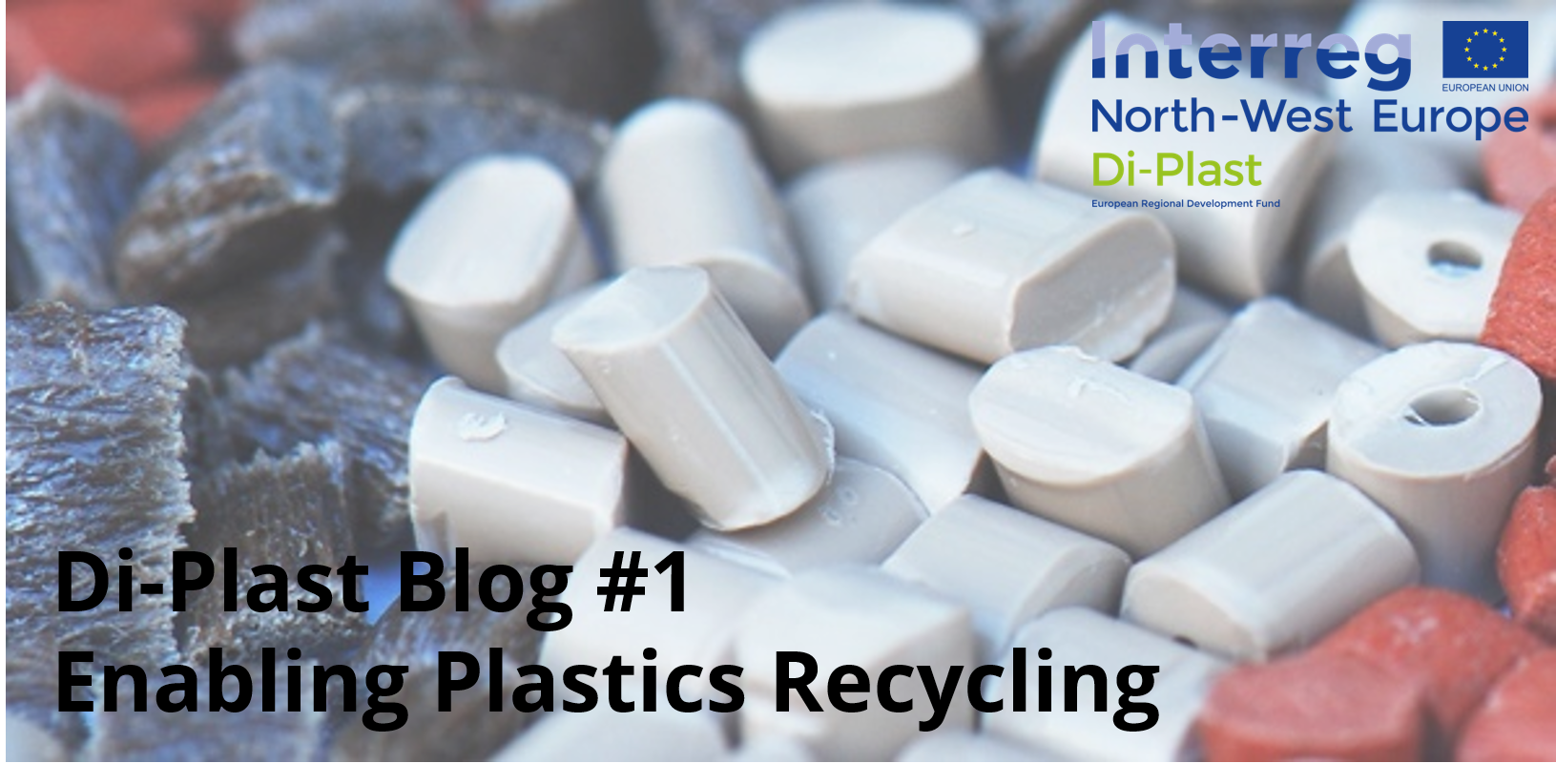
There is still a huge gap between the goals of the European Union for plastic recycling in 2030 and the status quo today. One key chance for closing this gap is the application of digital technologies like data science to improve processes and information flows throughout the entire recyclate supply chain.
Di-Plast develops and applies digital tools to enable high value plastics recycling, i.e. bring recycled plastics to its highest application possible. Supported by Interreg North-West Europe, we aim to close the knowledge and information gaps which inhibits plastics recycling. We enable companies to achieve access to highly relevant yet mostly hidden data, parameters and analytics from and for their own production processes. To realise this, our toolkit combines a distinct set of tools:
Currently, we are testing our toolkit with several companies and to validate their fit to industry’s needs. However, we are still looking for partners to test and apply these tools and for companies interested to learn about them in our uptake acceleration management.

All Di-Plast tools are developed as stand-alone tools that can be used independently from the other tools but also in combination. The following example shows one possible way of using the tools.
Start by getting an overview on your internal processes and information flows so that you can optimize them and make more out of your processes which include rPM or prepare your processes for rPM integration (VSM). The VSM tool helps to analyse, display and later optimize your cross-company product and information flows. It supports you in getting better knowledge about resource flows and localise bottlenecks either internally or withing your overall supply-chain.
Learn which sensors could help to get more information from your production (Sensoring) and learn how to get access to machine data that most likely is already there but not yet used (Machine Data Acquisition).
Now more in-depth work with your process data can start. Ideally you first use the Data Validation tool to assess data quality, gain insights in the variables and receive tricks how to increase your over all data quality. This might mean, that you go back to the Data Acquisition and the Sensoring tool but can also imply other steps.
Once your data quality is sufficient, we recommend using the Process Analytics Tool. It provides insights consisting of reports, visualizations and other analyses methods that describe the state of your processes and/or machinery. Errors in data found during the processing of specific materials can be automatically detected and made visible through reports and visualizations. This allows you to improve processes and their results. One module of this tool provides the opportunity to forecast future rPM quantities.
Our Matrix Tool can help you to find matching process and product requirements with material properties. Plastics users can find suitable recyclates for their applications here. The recycler, in turn, can offer its products (recyclates with specific material specification) or identify material specifications required by the market - and modify its recycling process to produce these materials. You will, therefore, gain a better understanding of the plastics recyclate market and opportunities, both as a user or supplier of rPM.
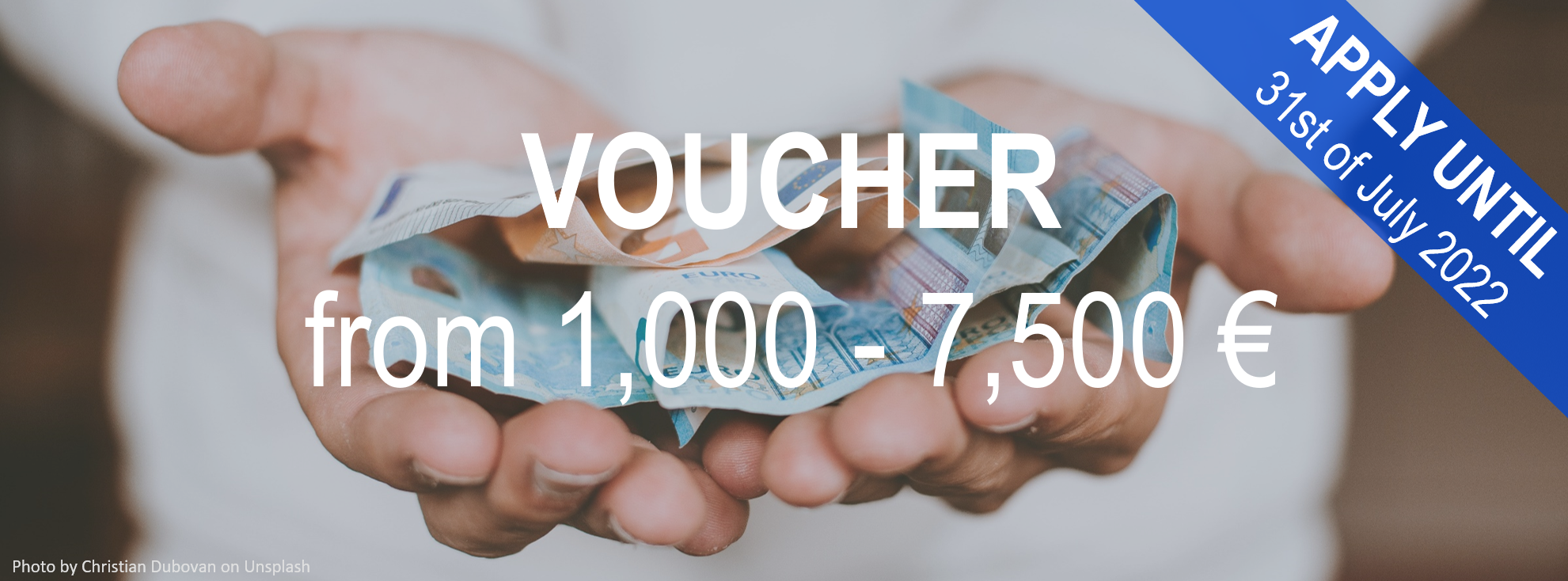
The application will be evaluated by review criteria which you can find at the bottom of this page.
If you have been granted, we will provide you with all necessary documents for the documentation. Applicants will be notified within 6 weeks if the voucher can be granted.
Relevant documents after the approval:
If you having doubts or question regarding
a suitable voucher or the application
process, please contact us!
Sophia Botsch I
SKZ-KFE (Regional Coordinator Germany)
Erik Plaggenmarsch I
Oost NL (Regional Coordinator The Netherlands)
Supports you with finding the right match for cooperation to introduce or increase recycled plastics in your production process. The following activities can be supported:
|
• Partner matching |
• Testing costs
|


Utilise external and specialist expertise to relise your project ideas for the (increased) use of recycled plastics.
The following activities can be supported:
|
• Technical engineering |
• Innovation consultancy |
Finance specific purchases to concretize projects to increase the usage of recycled plastics in your production process. Please note that you will be requested to send three tender offers with your application.
The following activities can be supported:
|
•External costs for (product/quality) testing |
•Process consulting services |

